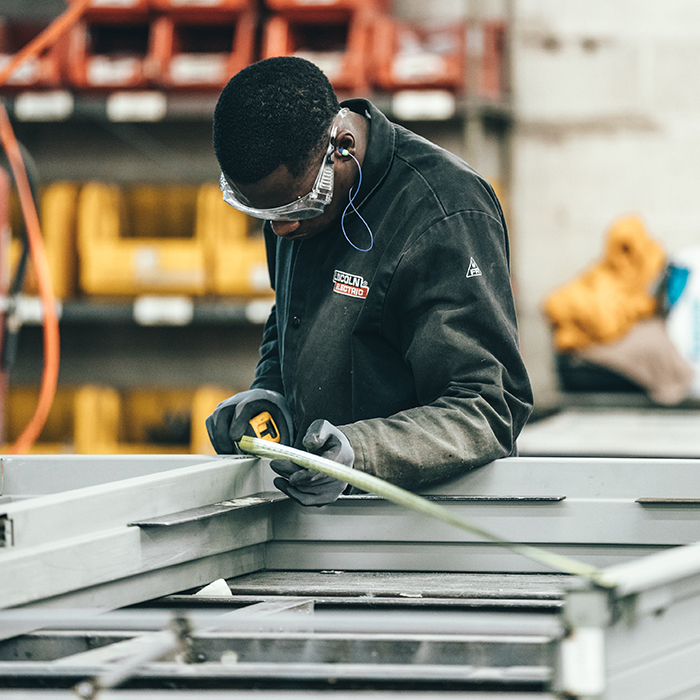How wearables are being used to keep workplaces open
It’s fair to say the wearable market is enjoying a boom right now. According to Gartner, the wearables market saw global sales of $68.9bn in 2020, up nearly 50% in one year. Sales look set to continue growing in 2021 with an estimated turnover of $81.5bn, as wearables play an increasingly integral role in keeping us working during the COVID-19 pandemic. Leo Scott Smith, Founder and CEO of Tended explains.
From a consumer perspective, wearables, especially those worn on the wrist, offer a value-add to everyday life. From tracking sleep and movement to monitoring health and fitness goals, the wellness trend and the lockdown home workout craze has helped boost sales.
In addition to consumer habits contributing to the industry’s growth, investment from tech giants in the wearable market has led the way for better products and customer experience. Amazon entered the fray with the launch of its new wellness service, Amazon Halo, which combines ‘a suite of AI-powered health tools’ with the Amazon Halo Band. Combine this news with Google’s parent company Alphabet signing a deal to acquire FitBit for $2.1bn, and the Apple Watch maintaining global popularity, there’s little wonder as to why the wearable industry has a bright future.
However, wearable technology isn’t just enhancing consumer experiences. Organisations and businesses are adopting wearables for their workplaces, particularly since the COVID-19 pandemic disrupted operations. According to research by Global Data, the pandemic may speed up the adoption of health wearables, with the collection of health data used for detecting the virus and for track-and-trace purposes.

Above: Technology is leading the way in addressing new safety challenges. Rapidly developed innovations are supporting business operations while protecting employees
During the first lockdown, when speaking with leaders across industries, many said they had to cease or decrease operations due to not being able to ensure the safety of their workers. As UK cases continue to rise, there is mounting pressure on businesses to ensure their premises are COVID secure. Guidelines are set to become legal requirements, and businesses can face fines of up to £10,000 or even closure if they don’t abide by the rules. HSE officials can conduct unannounced spot inspections to ensure workplace adjustments have been made to safeguard employees and others from the virus.
As well as facing prosecution, businesses that fail to maintain a COVID secure workplace increase the risk of an outbreak. Any outbreak represents major health concerns and disrupts business operations. In some instances, it results in an entire site or branch closure, putting major projects on hold and costing millions each day in lost production and sick pay. The main contributing factors in outbreaks include lack of social distancing and failure to contain the outbreak early on.
So how can wearables help?
Maintaining social distancing can be a challenge in any workplace as it requires a degree of behavioural change to ensure its success among employees. In response to this challenge, companies including Tended, have leveraged wearable technology to alert employees if they come within a predetermined distance of others via haptic alerts.
Maintaining a safe physical distance is critical to stop transmissions, and precision is highly important in a social distancing device. Ultra-wideband (UWB) technology uses time-of-flight technology to determine the distance between devices to within ten centimetre accuracy, making it on average 10-50 times more accurate than Bluetooth or WiFi. It is also unaffected by interference - a major limitation of Bluetooth-based devices.
Tended’s solution combines a wearable UWB Hub with a cloud-based dashboard. If employees come within a pre-set distance of others, their Hub will vibrate, reminding them to maintain social distancing. Any distance breaches, and their duration, are displayed on the dashboard, giving employers a broader view of their workplace behaviour. They can also access reliable, privacy-focused, contact tracing data in the event of a COVID-19 diagnosis.

Above: Maintaining social distancing can be a challenge in any workplace as it requires a degree of behavioural change to ensure its success among employees
Employee privacy concerns are the main barrier for a lot of people when it comes to workplace wearables. The idea of your employer being able to track your whereabouts is a troublesome one and the ‘Big Brother is watching you’ argument comes up every time a corporation announces the adoption sensor proximity sensors for their staff.
Contrary to some national news outlets’ take on wearables in the workplace, research across the pond has shown that employees would welcome wearables at work if it meant a safer working environment. According to a survey from Toronto tech company Nymi, 77% of North American workers would wear an employer-issued wearable on their wrist if it provides benefits such as social distancing reminders.
COVID-19 has changed the way we work. There is no certainty around when or whether things will return to how they were pre-pandemic, and organisations are still adjusting to changing guidelines. However, technology is leading the way in addressing these new safety challenges. Rapidly developed innovations are supporting business operations while protecting employees. That is why businesses must adopt technologies, such as wearables to create a safer working environment for employees who are unable to work from home.










